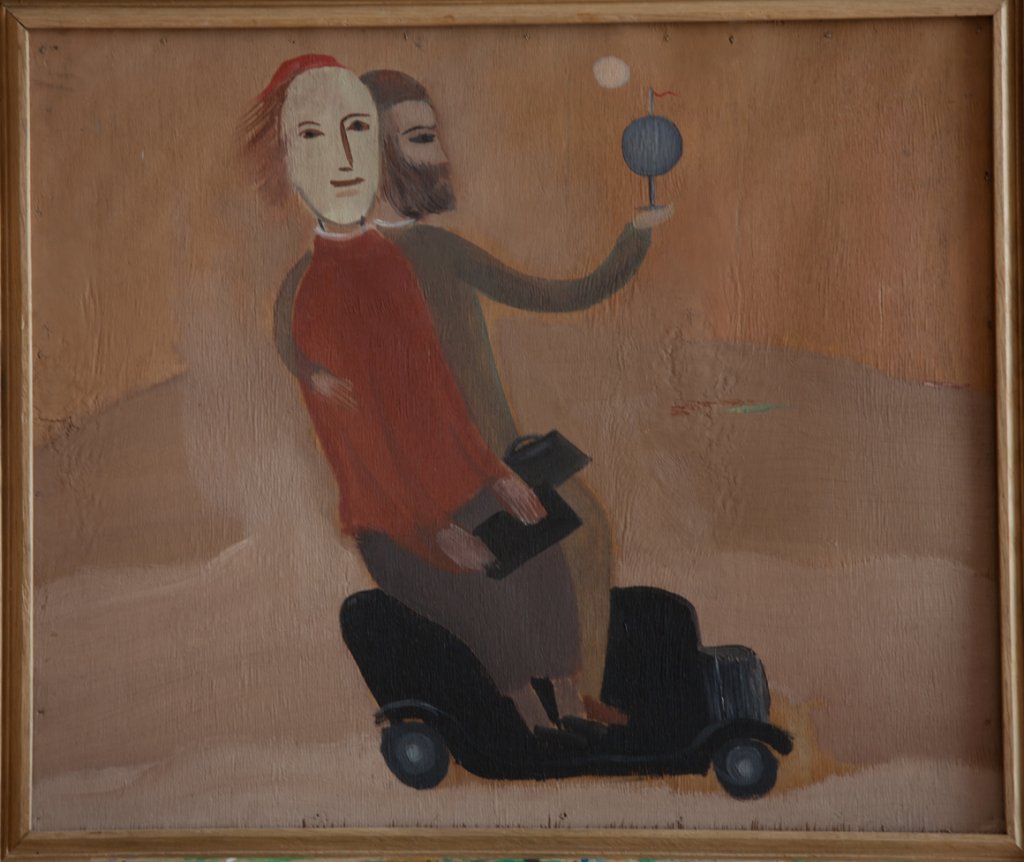Solomon Nikritin. A trip around the world (1918-1920)
Solomon Nikritin is a Jewish avant-garde artist from Chernihiv. In the history of art, he is known for his painting, monumental murals, campaign decoration of Kyiv and Moscow squares, theater scenes, and especially for his philosophy and methods of projectionism*.
Nikritin's years of study and the early period of creativity are connected with Kyiv. Here he finished his education at the Kyiv Art School in Murashko's studio, and also attended the workshops of Oleksandra Ekster. After several years in Moscow, the artist returned to Kyiv and worked during the stormy years of 1917-1920. He supports the revolution, actively studies the works of Picasso, Matisse and Cézanne, tries to achieve a combination of sounds and images, participates in the life of the Jewish Culture League (the organization was engaged in the popularization of Jewish culture and enlightenment). At the same time, Nikritin thinks a lot about a new artistic direction, which should educate not a master of making utilitarian things, but a new bearer and creator of culture.
It is to this period of searching and formation that the work A trip around the world belongs, which is kept in the collection of the Mystetskyi Arsenal. The picture is painted on an almost square wooden board with oil paints. Approximately in the center, on an orange-ochre background, two figures are depicted in full height. A man with a long dark beard and mustache embraces a woman with his right hand, and with his left holds a blue globe with a red flag at the top, symbolizing the victory of the revolution. The woman's face is turned towards the viewer, and her short brown hair seems to be blowing in the wind.

The figures "travel" on a small, completely disproportionate, relative to themselves, car, the movement from left to right can be easily read. The fact that the couple seems to be squatting on top of the car creates a grotesque impression: a combination of the real and the fantastic. As in the work of many Jewish artists of that time, Nikritin's painting is distinguished by a very characteristic combination of avant-garde techniques and attention to everyday details (often taken from the life of Jewish shtetl towns). And the naivety of the picture reminds another famous member of the Culture League — Marc Chagall. The faces of the heroes are marked with only a few lines, the color scheme is quite restrained, it is dominated by warm shades. The artist does not prescribe the landscape, does not give hints about what time of year, day of the week and where the travelers are.
The picture A trip around the world by Solomon Nikritin was animated by Pause to Play animation studio.
Created as part of the Living Collection project
Between the title of the work, the sphere of the globe and the rounded horizon line, you can see something in common — the motif of a circle, a sphere. It is interesting that in Nikritin's diaries we come across many reflections on the relationship of form, harmony, numbers and sounds; his own neologisms such as krugoradost (“circle joy"), krugotvorchestvo (“circle creation”), krugoznanie ("circle knowledge"), as well as drawings in which the artist analyzes the movement of the human body, inscribing it in a circle, similar to Leonardo da Vinci.
Solomon Nikritin, like many other avant-garde artists, was criticized by the authorities, but, fortunately, will remain alive. Although Nikritin stopped showing his creative experiments publicly, he did not give up his search. The artist was engaged in teaching activities, embodying his ideas in design. Nikritin was a sergeant in the aviation and technical unit in World War II, died in 1965.
*Projectionism is a painting direction within the avant-garde, developed by Solomon Nikritin in opposition to constructivism. The basis is the combination of the achievements of science and art. A projectionist artist is similar to a Renaissance researcher-experimenter. For several years, Nikritin managed to realize this ideal in his analytical office at the Museum of Fine Arts in Moscow.